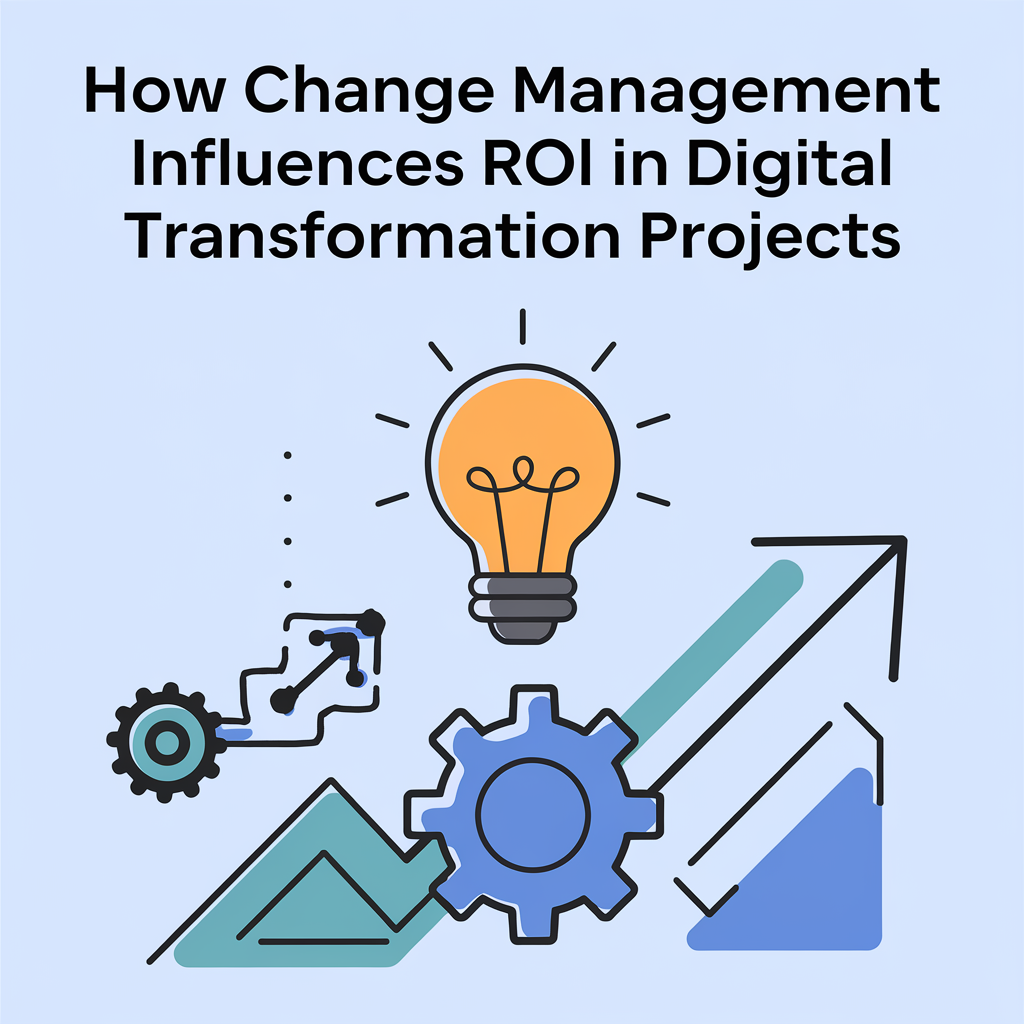Introduction
In today’s fast-paced digital world, businesses are increasingly relying on digital transformation to stay competitive. But as promising as digital transformation is, it doesn’t come without its challenges. One of the most crucial elements in ensuring a successful transformation is change management. Without it, even the most advanced technologies can fall short. So, how does change management influence ROI (Return on Investment) in digital transformation projects? Let’s explore.
What is Digital Transformation?
Digital transformation refers to the integration of digital technologies into all areas of a business, fundamentally changing how companies operate and deliver value to customers. It goes beyond just adopting new technology; it’s about reshaping the entire business model. Whether it’s improving customer experiences, streamlining operations, or driving innovation, digital transformation is at the heart of modern business success.
Understanding Change Management
Change management is the structured approach that guides how we prepare, support, and help individuals, teams, and organizations make a successful transition to new ways of working. In the context of digital transformation, change management helps businesses align their people, processes, and technologies to the new digital landscape.
The Link Between Change Management and ROI
You might wonder, why does change management matter to your bottom line? The answer is simple: when change management is executed correctly, it significantly increases the likelihood of success in digital projects. It ensures that employees are equipped to adapt, stakeholders are aligned, and processes are optimized—all of which directly contribute to improved ROI.
Key Components of Change Management in Digital Transformation
- Leadership Involvement: Leadership must champion the transformation, setting the tone and direction.
- Employee Engagement: Employees should feel part of the process, not just affected by it. Engaged employees are more likely to embrace the change.
- Clear Communication: Communication strategies need to be clear and consistent to ensure everyone understands the vision and their role in the transformation.
The Challenges of Digital Transformation Without Change Management
Many digital transformation efforts fail due to poor or non-existent change management. When businesses overlook this critical component, they face resistance from employees, confusion about the new processes, and missed opportunities for innovation. A classic example is Kodak, which failed to manage the shift to digital photography, leading to its downfall.
How to Implement Effective Change Management
Developing a successful change management strategy involves:
- Assessing Readiness: Evaluate your organization’s current state and readiness for change.
- Building a Plan: Create a structured plan that includes communication, training, and feedback mechanisms.
- Using Tools: Leverage tools like project management software and collaboration platforms to keep everyone on track.
- Measuring Success: Regularly measure progress against established KPIs to ensure your efforts are effective.
The Financial Impact of Change Management
When done right, change management reduces the risks associated with digital transformation projects, minimizing costs from rework or failure. It also enhances the long-term profitability of the business by ensuring smoother transitions and quicker adoption of new technologies.
Change Management Strategies for Maximizing ROI
Some effective strategies include:
- Employee Training: Offering continuous training to ensure employees are up-to-date with new technologies and processes.
- Feedback Loops: Creating feedback mechanisms to improve processes and systems continuously.
- Cross-departmental Collaboration: Ensuring collaboration across all departments to achieve a seamless transformation.
Technology and Change Management
With the rise of AI and automation, technology itself is becoming an integral part of change management. Tools like AI-driven project management platforms can help streamline change management efforts by providing real-time data, automating routine tasks, and offering predictive insights for better decision-making.
The Human Factor in Digital Transformation
At the heart of any digital transformation is the people who will use the technology. Employee buy-in is critical, and change management plays a vital role in overcoming resistance, building trust, and ensuring that leadership fosters a culture of innovation.
Metrics to Measure ROI in Change Management
Some KPIs to track include:
- Employee Adoption Rates: How quickly and effectively employees are using new systems.
- Project Completion Times: Whether digital transformation projects are completed on time and within budget.
- Cost Savings: Reduction in operational costs due to streamlined processes.
Case Studies: Success Stories in Digital Transformation
Take Microsoft, for example. Their cloud-first transformation was a massive success, thanks in part to an effective change management strategy. They invested in leadership and employee training, which resulted in high employee adoption rates and a significant increase in ROI.
Common Mistakes in Change Management
- Lack of Leadership Support: When leadership isn’t actively involved, it sends a message that change isn’t a priority.
- Poor Communication: If the vision isn’t clear, employees will struggle to understand their role in the change.
- Ignoring Feedback: Failing to listen to employee concerns can lead to resistance and lower ROI.
Conclusion
Digital transformation is essential for businesses to stay relevant, but without effective change management, the road to success can be bumpy. By prioritizing change management, organizations can maximize their ROI, minimize disruptions, and achieve long-term success in the digital age.
FAQs
- What is the role of leadership in change management?
Leadership plays a crucial role by setting the vision, supporting the team, and ensuring alignment across the organization. - Can digital transformation succeed without change management?
While possible, it’s highly unlikely. Without change management, digital transformations often fail due to employee resistance and lack of adoption. - How long does it take to see ROI from change management?
ROI from change management can be seen in as little as a few months, but it typically takes 1-2 years for full results to materialize. - What tools are essential for change management in digital projects?
Tools like project management software, collaboration platforms, and AI-driven analytics are essential for managing change effectively. - How do I measure the success of my change management strategy?
Success can be measured by tracking KPIs such as employee adoption rates, project completion times, and cost savings.
